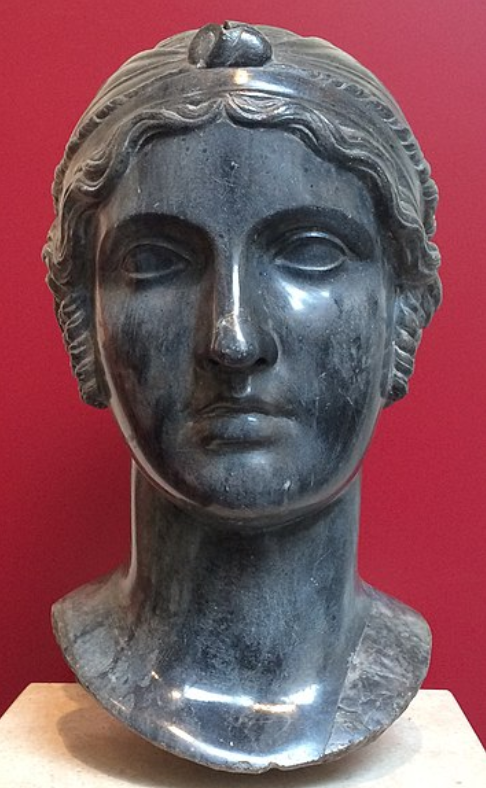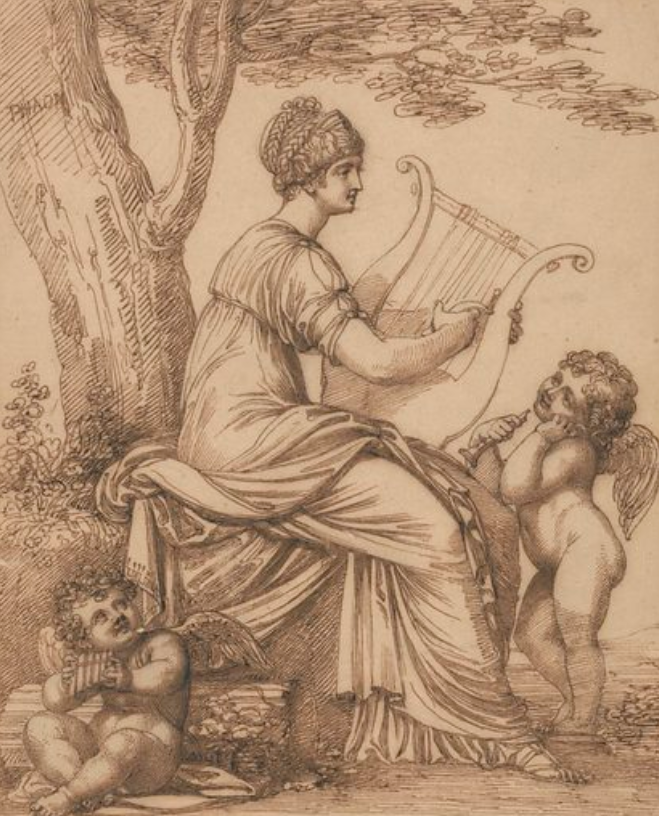The Enduring Timelessness of Sappho
Portrait of Sappho, identified after other inscribed portraits representing the poet with the same hairstyle. Modern copy (16th–18th centuries) after a Greek original, possibly an ancient bust reworked.
It’s no secret that the ancient world played host to a great number of figures that resonate with queer people. From emperor Hadrian to the genderqueer theatre-god Dionysus, to Achilles himself, it is hard to turn the page of a Classics textbook without encountering one of them. But perhaps none are more famous for their queerness than the great poetess of Lesbos, Sappho.
She was, of course, renowned by Plato as the ‘tenth muse’ and widely revered across the deeply misogynistic ancient Greek world, where her influence persisted strongly. She lays claim to being the first known great love poet in western history and gives her name to women who love other women, sapphics.
In the intervening 2,500 years between Sappho’s time and ours, her work has faced defilement and neglect, she was denounced as salacious by the monks responsible for transcribing her works, with Pope Gregory VII possibly going so far as to ordering that all of her works were to be burnt in the city of Rome.
The immortality of her words, however, has outlived the assailants to her memory and what little remains of Sappho’s poetry is extraordinarily potent.
Sappho has always been hugely important to the LGBTQ+ community, the word lesbian (taken from her home, Lesbos) to describe non-men attracted exclusively to non-men was not coined by any one person but rather rising to prominence in the mid-nineteenth century, a natural link between queer women and the poetess forming at the dawn of the modern period.
The attempts to erase and obscure Sappho’s work are all too familiar today for modern queer media: an open letter from Pixar employees published in 2021 alleged that they were forced to remove any same-sex affection; this year, screenings of Doctor Strange 2 were banned by Saudi Arabia simply for one fleeting moment where it is implied that one of the lead characters has two mothers.
Cases like these contribute to a climate in which mainstream media outlets are discouraged from centralizing queer narratives because it affects their bottom line, instead resorting to small token gestures that can be missed unless they are watched for and can be easily removed to appease reactionary audiences without significant bearing on the plot.
Gay people and their love, by design, are forced into the background, if present at all. Indeed, they cannot exist at all without an absurd degree of backlash and vitriol.
In times where hostility is still felt against explicitly queer literature, the unabashed expressions of Sappho’s love for other women is rather striking.
This is made clear in one of her most famous pieces, Fragment 94:
I have had not one word from her.
Frankly I wish I were dead.
When she left, she wept
a great deal; she said to
me, ‘This parting must be endured,
Sappho. I go unwillingly.’
I said, ‘Go, and be happy
but remember (you know
well) whom you leave shackled by love.’
‘If you forget me, think
of our gifts to Aphrodite
and all the loveliness that we shared
all the violet tiaras,
braided rosebuds, dill and
crocus twined around your young neck
myrrh poured on your head
and on soft mats girls with
all that they most wished for beside them
while no voices chanted
choruses without ours,
no woodlot bloomed in spring without song...’
(Barnard Translation)
In this poem, Sappho takes responsibility for the speaker by referencing herself by name, demonstrating its autobiographical nature and expression of her feelings. This stops it from being explained away as merely a work of fiction, that no homosexual desire can be drawn from because the speaker’s gender is not made explicit, as is sometimes done with Fragment 31 (usually in bad faith).
Sappho describes the unbridled grief she feels in being separated from the object of her affection and recounts their final exchange.
Despite being 2,500 years removed, this fragment remains timeless and deeply moving.
Sappho, 1826. Maria Hadfield Cosway, attributed to (1759–1838); Richard Cosway, after (1742–1821)
“Sappho was a good writer” is a revelation to no one, but this poem is remarkable to me in how very clear it is that she is speaking of same sex affection with these delicately crafted words. At the core of this work, Sappho sings about how much she loves this woman. It is beautiful and it is meaningful. These emotions are so universal and yet so rarely framed through this angle: Sappho does not shrink from expressing hers.
While Sappho herself did not identify as queer or as a lesbian, she would not be well-equipped enough to answer a question on modern labels for sexuality, and it is impossible to exactly pin her sexuality to a modern one, this is less important than the meaning she and her works hold for modern queer people.
They provide a powerful voice from ancient history describing unashamed same-sex love, providing solace as the homophobic culture seek to stifle expressions of queer love.



